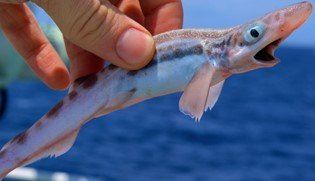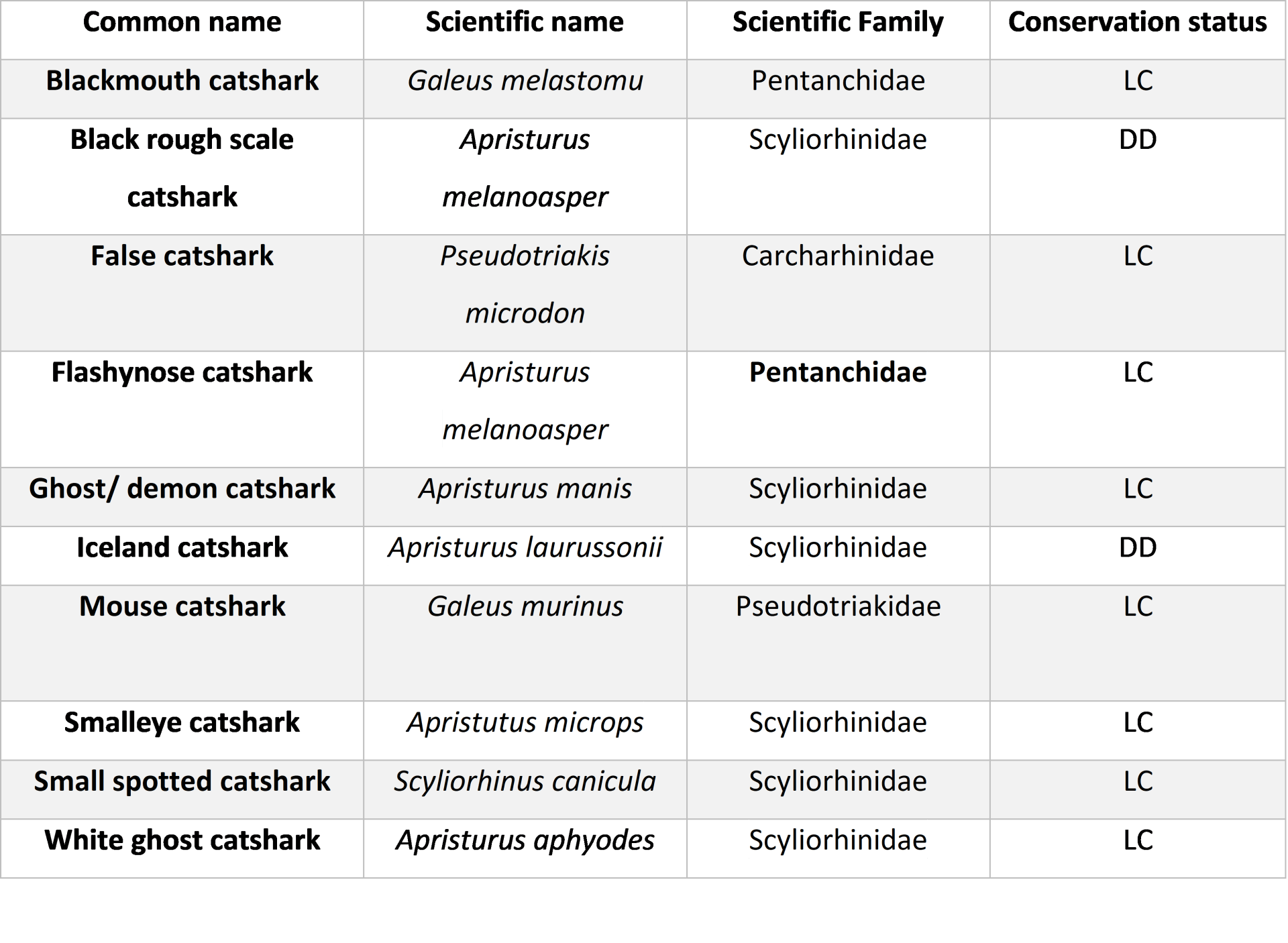A Bizarre and Unfamiliar Species: The Catshark
We know about larger shark species, a notable example being the Great white. Some of us have negative thoughts about them, others are fascinated. But what about the bizarre, alien-looking catsharks in the Irish waters, what do we know and how do we feel about them?
Most of us have heard about the larger shark species such as great white sharks, hammerhead sharks, whale sharks, reef sharks etc. because we have learned about them in school or we have seen them in the media.
But what about the bizarre sharks that live in the cold Irish waters, that are found so deep that we cannot see them? What do we know about them? For starters, they are called catsharks. The catsharks can be both alien looking (Figure 1), but some of them are actually pretty cute (Figure 2).
What we know about the catshark is quite limited, and researchers don’t seem to be agreeing on the information that we have available. For example, most online resources state that the catshark is rarely found deeper than 100m, however Weinheimer (2004) found reason to believe that some of the catshark species can reach depths of an astonishing 2000 meters.
There is also uncertainty about the catshark species body size. Some see the shark as a small sized shark that rarely grows larger than 1 meter (Weinheimer, 2004). On the other hand, Bird (2015), caught a false catshark in Scottish waters which measured 2.5 meters and had a weight of 60kg.
To make it even more confusing, some of the catsharks are also called dogfish (Weinheimer, 2004) which does not really make sense, does it?
So, what do we actually know for certain about these unique but bizarre shark species? We have an idea of what species of catshark are found in Irish waters. The background research that was done for this article found that there are at least ten different species of catshark which belong to five different families (Table 1). From the same table, we can also read that all species are listed as least concern (LC) or data deficient (DD) by the IUCN Red List of Threatened Species.
From Weinheimer (2004) we have learned that most of the catsharks (~90%) are oviparous, which means that they lay eggs, also called “mermaid’s purse’. Yes, some shark species give birth to live young, but others lay eggs! The catshark eggs are developed inside the female, then deposited and attached to a substrate in the water where it continues to grow before the baby shark then makes its way out of the egg.
The largest shark nursery ever recorded in Irish waters revealed thousands of catshark mermaid’s purses at the incredible depth of 750 meters! (Barkham, 2018). The article believes that these eggs belong to the catshark species called black mouth ( Galeus melastomu).
Although catsharks have small teeth, they have up to hundreds of rows of them in each jaw! In some species of catshark, the males and females have different sized and shaped teeth. Weinheimer (2004) explains how this might be the case where the males would have larger teeth than females so that they can grasp the female during courtship.
We don’t know much about the Irish catshark species. But we have an understanding that the different catshark species varies, at least in their body size and their ability to reach different depths.
Bird (2015) discusses the issue that we don’t have the knowledge about the basic biology of the catshark, or of it’s movement or feeding behaviours, so how can we know the impact of deep-sea fisheries and pollution as a possible threat to the species? This raises another question; on what basis can the IUCN Red List be certain of the conservation status of the catshark species when we know so little about them?
Most catsharks are found at locations which makes it hard to observe them naturally and to collect them for research. It does not help that some of them are found at great depths as well. Hence, much more information about the catshark remains to be discovered.References:
Barkham, P., 2018. Ocean Floor Rover Finds Large Shark Nursery In Irish Waters . The Guardian Available at: https://www.theguardian.com/environment/2018/nov/09/shark-nursery-found-irish-waters-blackmouth-catsharks
Bird, C., 2015. Meet The Ghost Sharks And Deep-Sea Demons That
Will Haunt Your
Dreams
. The Conversation. Available at: https://theconversation.com/meet-the-ghost-sharks-and-deep-sea-demons-that-will-haunt-your-dreams-49325.
IUCN 2020. The IUCN Red List of Threatened Species. Version 2020-1. Available at: https://www.iucnredlist.org/
Weinheimer, M., 2004. Scyliorhinidae (Cat Sharks) . Animal Diversity Web. Available at: https://animaldiversity.org/accounts/Scyliorhinidae/
SHARE THIS ARTICLE
















